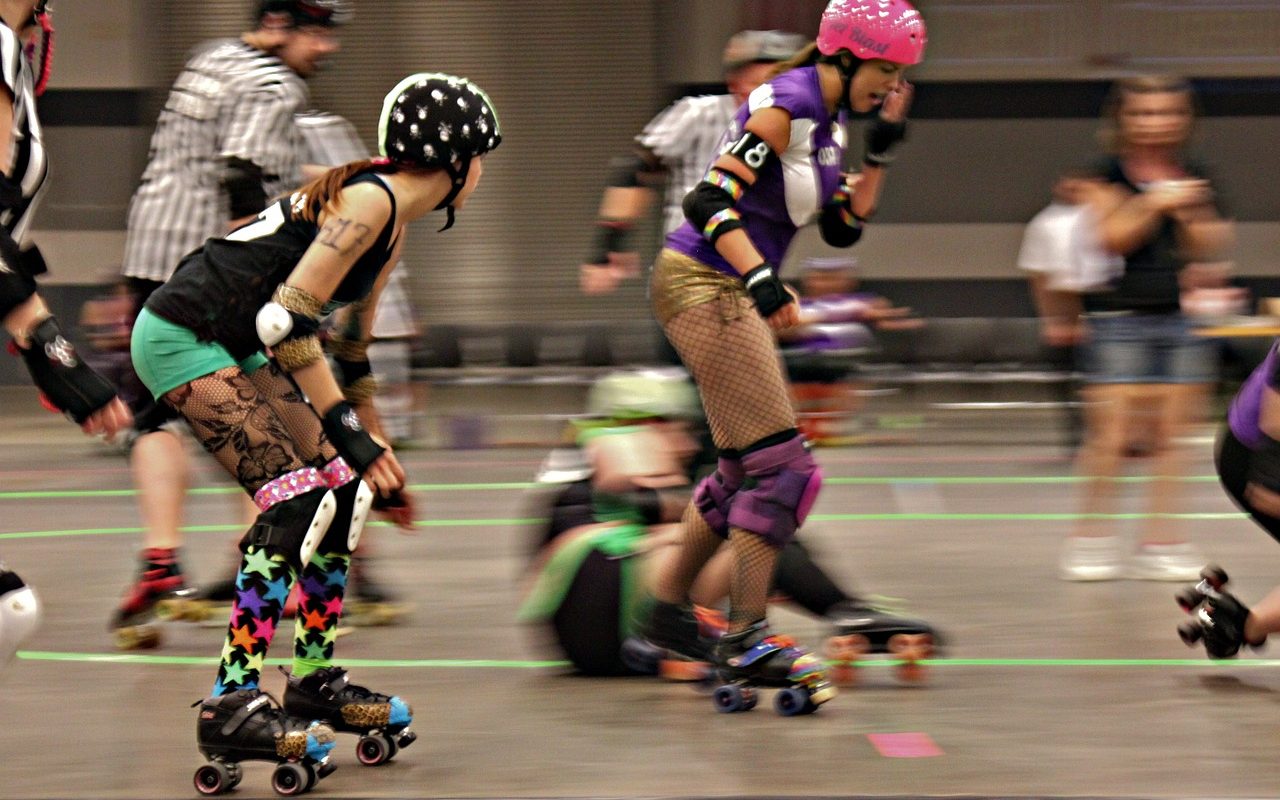You might have read the title and thought “what is Roller Derby?” or maybe you are one of the few people that knows what Roller Derby is, but you still asked yourself “what is Agile?”. Roller Derby is a full contact sport played on roller skates. Agile is a way of working based on trust, adjusting to a changing environment and self-organized teams. Believe it or not, they have a lot in common. Will you keep reading and find out more?
Last month, when I was attending a class about the theory of Agile Software Development, all I could think was: this is like Roller Derby.
What is Roller Derby?
Roller Derby is one of my favorite things in the world. You might have never heard of it, but I am pretty sure you know what rugby is (even if you do not know its exact rules). Now let me paint a picture in your head. Imagine a game of rugby, but on roller skates. Got it? Now delete the ball from the picture and substitute the grass field for some skatable floor in an oval shape. Finally, reduce the number of players to 5 per team. We are almost there. You might now be wondering how to make points if there is no ball. For that, we have one jammer per team. This player wears a star on their helmet and makes points by skating past the players of the other team not wearing a star, which are the blockers. You probably imagine that they are going very fast, but they are not (at least not all the time). Roller Derby has a ton of rules. One of them imposes that it cannot really be a race but more like a scrum. If you need some help picturing it, watch this video.
Unlike rugby, or football, for which there is usually a federation organizing competitions, most Roller Derby events are organized by the home team (the team hosting the event). Some of the tasks that need to be taken care of are:
- Planning and giving trainings since many teams do not have a dedicated coach
- Finding a venue for trainings, matches and other events
- Raising money and taking care of the finances
- Designing the merch, social media posts and website
In the praxis, this means that most Roller Derby players are not just showing up for practice and games and going back home. They also need to figure out some bits of the whole infrastructure surrounding the team.
What is Agile Software Development?
What I see as the core of the Agile philosophy is this idea of a team being completely independent, without a hierarchy, and having to figure out all the tasks on the fly.
These twelve principles are behind the Agile manifesto. Some of them I find to be quite specific to software development. Let me walk you through some of the more general Agile principles:
„Build projects around motivated individuals. Give them the environment and support they need, and trust them to get the job done.“
In Roller Derby, no matter if it is organizing a project or playing a match, you always need to trust that the people working with you are going to try their best. It is after all a team sport. During games, a person alone cannot win a match. It is just physically impossible. When organizing a project, you could try to do everything alone, but that is not sustainable in time. Which brings me to the next Agile principle I would like to point out:
„Agile processes promote sustainable development. The sponsors, developers, and users should be able to maintain a constant pace indefinitely.“
Something very important to Roller Derby is having an inclusive community where everyone feels welcomed no matter their race, sexual orientation, gender identity, body shape, etc. To work towards this goal (and also manage the tasks mentioned above), we have regular meetings where we reflect on how to improve and plan our next steps. Here are the Agile principles that I think refer to this:
„At regular intervals, the team reflects on how to become more effective, then tunes and adjusts its behavior accordingly.“
„The most efficient and effective method of conveying information to and within a development team is face-to-face conversation.“
The one resonating the most with me is:
„The best architectures, requirements, and designs emerge from self-organizing teams.“
Which I think is the core of how Roller Derby is organized.
Which one resonates the most with you?
